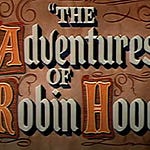Equity Breakdown Sponsors:
Masterworks: What’s the one thing in every hedge fund titan’s portfolio that you’re probably not investing in?
A-R-T. In fact, 84% of ultra-high-net-worth individuals collect art according to a 2019 Deloitte survey. It makes sense—contemporary art prices rose 13.6% per year from 1995-2020 vs. 8.9% returns for the S&P 500 (with virtually no correlation). And with the total art market expected to balloon from $1.7T to $2.6T by 2026, it’s no wonder that the price of paintings has steadily risen. One New York startup is at the center of it all:
They’ve fractionalized multimillion-dollar masterpieces by KAWS, Basquiat, Banksy, and more—and you can be a part of it. If you're looking for an elite, real asset class, check out Masterworks today. They’ve allowed Equity Breakdown subscribers to skip their 25,000 person waitlist with this link below:
*See important information
⚡This is Equity Breakdown, where you will find short, no bullshit overviews of public companies! Join me in breaking down industries and companies that will become leaders embracing disruptive technologies and innovating change! Subscribe Now!
“Compound interest is the eighth wonder of the world.” - Albert Einstein
To all the Time Investors,
Today we will understand the indirect benefits that space technology delivers on Earth. I want you to focus on three key works: GPS, automation, and agriculture. Now the company breakdown today is for Trimble Inc., ($TRMB). The company is on a mission to transform how the world works by bridging the physical and digital world with technologies in “positioning, modeling, connectivity and data analytics”.
🔴Download Equity Breakdown Report
📖What is Trimble Inc.?
Trimble is a 42-year industrial technology company that delivers hardware, software, and service solutions to bridge the physical world and the digital world. The company has a spirit of innovation by pioneering the world’s first GPS positioning machine in 1984. In the span of 40 years, it has evolved its technology stack from the GPS to technologies in positioning, productivity, and integrated work processes. Across construction, transportation, and agriculture the company delivers solutions that ensure productivity, quality, safety, and sustainability.
Trimble has designed a formula that converges technology across machines, vehicles, tools, and human labor to deliver real work to society. When you think of Trimble think about four key phrases:
Agriculture Autonomy
Construction Intelligence
Transportation Fleet Optimization
AI Industrial Company
📈Market Opportunity
The business sectors that Trimble operates in are buildings and infrastructure, geospatial, resource and utilities, and transportation. Ultimately, all these sectors will be impacted by automation in some fashion. Increased automation and productivity will ultimately result in greater economic benefits. The ARK Invest team has highlighted that automation will deliver higher wages, lower prices, higher margins, and higher investments. Based on their research GDP is expected to deliver 2.5% CAGR and with automation accelerate to 3.4% CAGR. Ultimately, automation will deliver $1.2 trillion in the next five years.
Now within each of these sectors, Trimble expects accelerations as each sector has shown increased demand regardless of the economic shutdown that occurred in 2020. Government stimulus has helped and with the new Biden proposed budget, capital will continue to flow. Let us break this down into the four segments to understand the expected growth:
Building and Infrastructure segment involves architecture, engineering, construction, and operations and maintenance.
The Global construction market is expected to grow at a CAGR of 9% valued at 12.5 trillion
U.S. Govt Budget: Buildings, schools, and hospitals: $250B+, Digital Infrastructure: $100B+
Geospatial segment involves surveying, engineering, and government
Global Geospatial market is expected to grow at a 12.9% CAGR valued at $96.3B
U.S. Govt Budget: Digital Infrastructure $100B+, NASA $24.7B
Resource and Utilities segment involves agriculture, forestry, and utilities
Global Precision Farming Market is expected to grow from at a 13.1% CAGR valued at $16.4B
U.S. Govt Budget: Cleantech and related infrastructure: $300B+, Water Utilities: $111B+, Agriculture: $27.8B
Transportation segment involves long-haul trucking and freight shipper markets
The global long-distance general freight trucking market is expected to grow at an 8.3% CAGR valued at $826B
U.S. Govt Budget: Transportation Budget: $621B+
As we consider the growth projections within the next five years and the U.S. Govt budget for 2022, Trimble at an enterprise valuation of $22B seems to be at the intersection of the industrial economy that is poised for transformation.
👨💻What are the Strategic Resources?
Product Portfolio:
Buildings and Infrastructure Technology: Program management solutions for contractors, 3D conceptual design and modeling software, building information modeling software used across the entire cycle of construction of a building, and enterprise resource planning and project management. The critical platform is Trimble Connect, which streamlines project processes across the entire construction team. The goal is to automate and create productivity. Additionally, in 2020 the company in partnership with Caterpillar is developing the next generation of autonomous products for earth-moving machines.
Geospatial Technology: Solutions offering field-based data and the ability to generate analytical insights, high precision GNSS, robotic measurement systems, 3D laser scanning, digital imaging, and optical and laser measurement. The company recently launched their new GNSS receiver, Trimble R12i, that enables points to be measured while the survey rod is tilted (does not require leveling) allowing for accuracy and speed. The goal here is to give customers benefit to improve productivity, insights, and safety in the field and back-office activities.
Resource and Utilities Technology: In the agriculture realm the company delivers autonomous steering, automated and variable-rate application, and information management software to help farmers improve crop yield, profitability, and environmental quality. The technology provides automated navigation guidance for tractors and other machines used in spraying, planting, cultivating, harvesting applications, pesticide, and seeding. Water management solutions are also offered to deliver cost reductions and limit waste. Ultimately, Trimble Positioning Services delivers precision and automation across agriculture and construction.
Transportation Technology: The company delivers software that provides fleet management, analytics, routing, mapping, reporting, and predictive modeling solutions.
Technologies Acquired: In 2018 the company acquired e-Builder and Viewpoint for a total of $1.6B.
Developing Resources:
The company continues to make significant investments across positioning, communication, and information technologies with R&D averaging around ~$421M in the past five years representing 13% of revenue. To date, they have over 1,000 unique issued and enforceable patents covering key technology areas such as:
“Precision global navigation satellite systems, optical and inertial positioning solutions, artificial intelligence, and machine learning, IoT, cloud computing, laser scanning, 3D modeling, point cloud processing, augmented reality”
65% of R&D is spent in Software
3,4k (30%) of employees focused on product development
The company is not dependent on any patent or license
Customer Landscape + Partnerships:
Trimble’s customers range from construction owners, contractors, engineering and construction firms, surveying companies, farmers and agricultural companies, energy and utility companies, trucking companies, and local, state, and federal governments.
81% of the revenue was generated by customers in North America and Europe with expansion across the rest of the world.
A key point to take into consideration is that no single customer accounted for 10% or more of the revenue in 2020 and 2019 and no single customer accounted for 10% of accounts receivable. Revenue is diversified across the key business segments.
Geospatial Sector: 10,000 surveyor and mapping firms + Joint Venture with Nikon
Construction: 29 million SketchUp activations + 10 million users of Trimble Connect + joint ventures with Caterpillar and Hilti
Agriculture: 155M acres using Trimble technology (The state of Texas is around 171M acres) + 115K customers subscribing to Trimble correction services for high precision GNSS + 98M acres (The state of California is around 100M acres) covered using Trimble Ag Software
Transportation: Trimble technology 99% of top 200 trucking fleets in U.S. + >2 million assets managed with Trimble technology
Business Model and Growth Strategies:
Trimble’s business model has evolved from selling hardware to building out recurring revenue with subscriptions from software and services. This transition over the past 42 years has improved the operating margin from 7.5% in 1999 to 22.8% in 2020. In 2020, their revenue was split 42% Hardware and 58% Software. This gives you a strong indication as over time the company has strategically placed its focus on delivering software and ensuring the expansion of a recurring revenue model.
2020A Revenue: $3.1B | 2022E Revenue: $3.6B – 7.5% CAGR
Recurring Revenue: $1.6B
ARR: $1.3B
2020A Gross Margin: $1.8B (59%)
Recurring Gross Margin: 0.8B (73.8%)
2020A EBITDA: $0.79B (25.3%) | 2022E EBITDA: $0.9B (25%)
2020A FCF: $0.62B | 2022E FCF: $0.63B (70% of EBITDA)
The company plans to continue accelerating growth through the following initiatives:
The company’s main objective that is spearheaded by the new CEO is executing the Connect & Scale 2025 strategy. Trimble’s leadership wants to accelerate infrastructure to connect data and customers and create deeper workflow integration. Solutions will be available to customers through the cloud and through subscription. Additionally, they want to ensure they have the people and culture that is well equipped for the age of digitization.
The company is also placing focus on expanding digitization deeper into the construction, agriculture, and transportation sectors. These sectors have been resistant to technology implementation and Trimble stands as a strong partner to transform their operations.
Resources will also be deployed to expand software and services across the vertical end markets.
International expansion is also a key focus with established distribution channels across 85 countries.
Strategic acquisitions are also critical to ensure market position. The company is well experience over the years when it comes to integrating the appropriate technologies to serve the customers in the industrial sectors.
🧬Team DNA and Vision
Key Leaders:
Steven W. Berglund, Executive Chairman – Prior, Steven served as CEO of Trimble since 1999. His deep engineering experience and operational experience built the foundation for the software business to support the underpenetrated industrial markets.
Peter Platzer, CEO, - Peter joined Trimble in 2006 and has built a 15-year career with various leadership roles across the construction business of the company.
Key positions in various business sectors such as SVP of Construction Businesses, SVP of Surveying and Geospatial Businesses, and SVP of Natural Resources have 52 years of collective experience at Trimble.
Team Composition: The company has had three CEOs since its inception in 1978. The executive leaders have long tenures in the company reflecting stability and industry expertise. This reflection of leadership translates to a strong culture within the company that focuses on innovation and growth. Trimble exhibits strong values across its employee base which in reinforces the belief in the company’s mission. They understand the importance of culture and how that transforms a company’s future.
🤯Key Insights for Time Investors:
The industries that Trimble operates are heavily supported also by the government. The Biden Administration is proposed $1.2 trillion to revitalize America’s infrastructure.
The statement ‘software is eating up the world’ certainly applies to many industries. However, when it comes to industries like construction the pace of software penetration slows down quite a bit. These large industries are usually resistant to full technology transformations. As a result, the problems these industries suffer from are productivity, quality, safety, transparency, and environmental stability. Realizing the difficulty, Trimble has spent 42 years building out its foundation to ensure they deliver innovative hardware and software to customers. Time has been on Trimble’s side.
Now, one thing that certainly was surprising is the fact that Trimble has been in autonomy, specifically in the agricultural industry, for the last couple of decades. The CEO claimed that they called it “machine control and guidance”. Similarly, the company has been in IoT before it became an acronym. It looks like the technology trends are playing in Trimble’s favor after years of building out their network.
The company has shown consistent and tenured leadership which is rare in today’s market. In their 42-year history, there have been three CEOs, with the past two serving around 20 years. This is the type of rare leadership that you will not find across many technology companies.
The company is cash-flow positive and profitable since 2010. Over the last 10 years, they have continuously increased cash flow. In 2015 profit started increasing as the software sector began to grow more steadily.
In the past 15 years, the company has also conducted 100 acquisitions to integrate the right technologies and talent into its ecosystem.
When it comes to technology, the CEO stated that the most mature product categories would be the GPS guidance system. Now, this maturity is present in America, but in other parts of the world, it could still be the first inning. However, the opportunities lie in water management, software, and autonomy since they are just developing.
💪Key Strategic Moats
Technology: The company has integrated technology and software to large industries that are typically resistant to transformation. Core technologies in positioning, modeling, connectivity and data analytics are protected by 1,000+ patents and implemented across various workflows for customers to increase productivity and profits. The company has achieved autonomous technology, AI/ML models to produce rich data analytics for customers, and construction intelligence applications that allow customers to control the entire workflow process of building a variety of structures.
Scale: Trimble has built world-class distribution networks and partnerships that drive deep customer relationships. This moat has allowed Trimble to enable technologies and common platforms vertically for industry-specific solutions.
Team and Culture: Peter Platzer is the third CEO in Trimble’s 42-year history, following 2 20-year CEO’s. This tenured leadership reflects the strong values Trimble has across its employees. The mission at Trimble is to transform the way the ‘real’ world works! As a result, with stable leadership that is open to change, you cultivate a culture of innovation and success.
Network Effects: As various customers across sectors utilize the technology applications and workflows, the entire ecosystem will benefit from enhanced productivity, profitability, and sustainability.
⚠️Key Critical Risks
Competition: Now the company does face competition across each of its business sectors. The competitors in the building and infrastructure sector usually provide optical, laser, or GNSS positioning products and some software specific to the construction process. In the Geospatial sector, the competitors are survey instrument companies that deliver 3D measurement and imaging solutions. Finally, in the resources and utilities sector, competitors (Deere, AGCO) are vertically integrated farm equipment and implement companies and agricultural instrument companies.
Partnerships Risks: The company’s success regarding some business operations is highly dependent on Caterpillar, Nikon, Hilti, and CNH Global. Similarly, these companies also offer distribution network access to Trimble for their products as well. Any change that does not provide benefit to the key partners can result in a drastic impact on performance.
Acquisitions: The company has a long list of acquisitions over the past 42 years. However, poor acquisitions could be costly and require more additional resources than anticipated to integrate. Acquisitions are a key strategy for the company to continue market share.
Dependent on availability of allocated bands within the radio frequency spectrum: The company’s GNSS technology application is highly dependent on satellite signals and terrestrial communication bands. Changes in regulation, by the Federal Communications Commission for private actors to come in, can create severe implications.
GNSS Technology relies heavily on satellite systems: GPS satellites were originally designed to have lives of 7.5 years and any repair of damaged satellites currently is not possible. As a result, the company is heavily dependent on the Russian GLONASS and the European Galileo GNSS Systems.
Debt Risk: Total debt for the company is $1.3B (38% of revenue). As the debt matures the company will have to allocate cash reserves or re-finance. The company will need to watch this and ensure they can continue to expand to meet the debt obligations.
Trimble sits at the intersection of industries that are embracing digitization. When it comes to infrastructure build, the CEO of Trimble was quoted, “our goal is to make it greener and more autonomous”.
Stay incurably curious!
-Igli G. Laçi
If you like the content please make sure to share this newsletter, share this post, follow me on Twitter, and/or subscribe (if you have not already)!
Additional resources and sources I used for all the Time Investors (Leeeetttsss Gooooooo!!!)
The impact of the tractor in American Agriculture (*Sourced from Ark’s research)
Trimble CEO Interview on CNBC - Benefits from government spending
Disclaimer: The companies mentioned in my newsletter are not investment advice. This is simply information researched to help you learn about industries and various public companies











